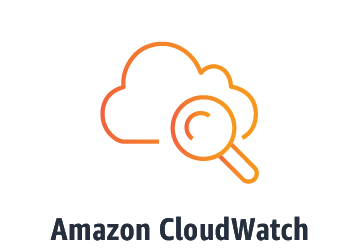AWS DevOps Blog
Tag: Best practices
Setting up a CI/CD pipeline by integrating Jenkins with AWS CodeBuild and AWS CodeDeploy
In this post, I explain how to use the Jenkins open-source automation server to deploy AWS CodeBuild artifacts with AWS CodeDeploy, creating a functioning CI/CD pipeline. When properly implemented, the CI/CD pipeline is triggered by code changes pushed to your GitHub repo, automatically fed into CodeBuild, then the output is deployed on CodeDeploy. Solution overview […]
New – How to better monitor your custom application metrics using Amazon CloudWatch Agent
This blog was contributed by Zhou Fang, Sr. Software Development Engineer for Amazon CloudWatch and Helen Lin, Sr. Product Manager for Amazon CloudWatch Amazon CloudWatch collects monitoring and operational data from both your AWS resources and on-premises servers, providing you with a unified view of your infrastructure and application health.
Ensuring Security of Your Code in a Cross-Region/Cross-Account Deployment Solution
There are multiple ways you can protect your data while it is in transit and at rest. You can protect your data in transit by using SSL or by using client-side encryption. AWS Key Management Service (AWS KMS) is a managed service that makes it easy for you to create, control, rotate, and use your encryption […]
Building a Continuous Delivery Pipeline for AWS Service Catalog (Sync AWS Service Catalog with Version Control)
AWS Service Catalog enables organizations to create and manage catalogs of IT services that are approved for use on AWS. These IT services can include everything from virtual machine images, servers, software, and databases to complete multitier application architectures. You can use AWS Service Catalog to centrally manage commonly deployed IT services. It also helps […]
How to Create an Automated Database Continuous Integration and Release Management Workflow with Datical and AWS
Editors note: This blog post is out of date. For an up-to-date blog post on how to implement CI/CD for your database you can try this post “Deploy, track, and roll back RDS database code changes using open source tools Liquibase and Jenkins.” Thank you to my colleague Erin McGill for reviewing and providing valuable feedback on this […]
Building a Microsoft BackOffice Server Solution on AWS with AWS CloudFormation
Last month, AWS released the AWS Enterprise Accelerator: Microsoft Servers on the AWS Cloud along with a deployment guide and CloudFormation template. This blog post will explain how to deploy complex Windows workloads and how AWS CloudFormation solves the problems related to server dependencies. This AWS Enterprise Accelerator solution deploys the four most requested Microsoft […]
Optimize AWS CloudFormation Templates
The following post is by guest blogger Julien Lépine, Solutions Architect at AWS. He explains how to optimize templates so that AWS CloudFormation quickly deploys your environments. ______________________________________________________________________________________ Customers sometimes ask me if there’s a way to optimize large AWS CloudFormation templates, which can take several minutes to deploy a stack. Often stack creation is […]
AWS CodeDeploy: Deploying from a Development Account to a Production Account
AWS CodeDeploy helps users deploy software to a fleet of Amazon EC2 or on-premises instances. A software revision is typically deployed and tested through multiple stages (development, testing, staging, and so on) before it’s deployed to production. It’s also a common practice to use a separate AWS account for each stage. In this blog post, […]
Setting Up the Jenkins Plugin for AWS CodeDeploy
The following is a guest post by Maitreya Ranganath, Solutions Architect. In this post, we’ll show you how to use the Jenkins plugin to automatically deploy your builds with AWS CodeDeploy. We’ll walk through the steps for creating an AWS CodeCommit repository, installing Jenkins and the Jenkins plugin, adding files to the CodeCommit repository, and […]
AWS CloudFormation at AWS re:Invent 2015: Breakout Session Recap, Videos, and Slides
The AWS CloudFormation team and others presented and shared many updates and best practices during several 2015 AWS re:Invent sessions in October. We wanted to take the opportunity to show you where our presentation slides and videos are located as well as highlight a few product updates and best practices that we shared at this […]


